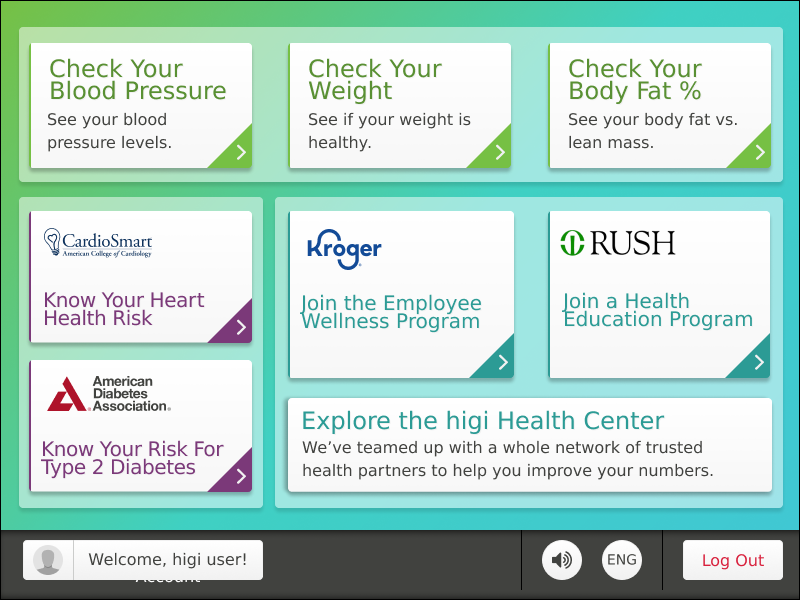
Health Risk Tests
Evaluating people’s risk for Diabetes and Hypertension
Product Design - Kiosk UI - User Research - Leadership
Overview
Our team worked with the American Heart Association and the American College of Cardiology to bring easy-to-use health tests to the public.
Outcomes
Over 500,000 people evaluated for health risks
30,000 at Risk patients were connected with life saving resources
Goals
Make it easy for people to understand their risk for diabetes and heart disease
Connect people with the right health partners such as health systems, payers, and providers
My Role
I worked as product designer. I helped develop design direction and worked closely with product, engineering and clinical experts.
Background
Understanding one’s risk for heart disease and high blood pressure is a first step for taking action toward better health. Higi worked in partnership with the American Heart Association (AHA) and the American College of Cardiology (ACC) to combat the large number of Americans with undiagnosed diabetes and heart disease by offering free and convenient self service assessments at Smart Health Stations. Based on answers to health questions and biometric readings (e.g. blood pressure), the user receives a personalized risk score, actionable next steps, and resources available to them.
Existing Risk Test
The current diabetes risk test was located on a subsection of the ADA and ACC’s website, making it hard to find. The overall UX was very clinical and lacked a user-friendly approach to encourage people to check their risk. Our goal was to make the risk test less clinical in feel while still maintaining trust in the results.
Approximately 98 million American adults—more than 1 in 3—have prediabetes. Of those with prediabetes, more than 80% don't know they have it.
— CDC
Process
SME Interviews
Our team interviewed Clinical SMEs from the Higi team and the American College of Cardiology to find out how we take the current test and make it more user-friendly, while still maintaining accuracy and trust with our users. These clinicians worked alongside the product team to ensure we developed a trustworthy and medically accurate tool.
Design Decisions
Our team focused on a few key areas to make the risk test easy to use and informative. We specifically focused on transparency and education when asking questions about the person’s health history.
User Flow
User flows were developed to help the business and engineering teams understand the user experience.








